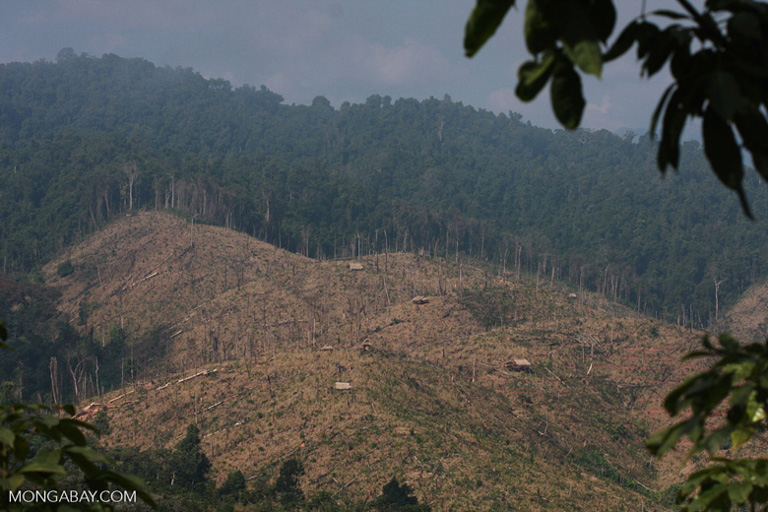- Bridgestone is the world’s largest tire and rubber manufacturer.
- The company joins Pirelli and Michelin in committing itself and its suppliers to a sustainable supply chain by 2050.
- The move could be particularly beneficial in places like Cambodia, where deforestation has closely tracked the global price for rubber.
The world’s largest tire manufacturer has pledged to develop a fully sustainable supply chain by 2050.
Bridgestone announced on Feb. 6 an overhauled sustainability policy for its suppliers, which pulls together the Japanese company’s stances on issues related to land use, including deforestation and human rights.
“Our goal is to create long-term environmental, social and economic benefits for everybody,” Jim DeMouy, Bridgestone Americas vice president for environment, health, safety and sustainability, said in an interview with the publication Rubber and Plastics News. “It’s a real step forward for the industry and for us.”

The document outlines Bridgestone’s plans for “net-zero deforestation,” which will require suppliers to avoid cutting primary forest; to obtain free, prior and informed consent from local communities; and to “protect and preserve” high-carbon-stock and high-conservation-value spots.
Rubber prices closely track deforestation in Cambodia, according to Global Forest Watch. The organization found that as global rubber prices surged, so did tree cover loss.
Globally, “[t]here’s a lot at stake,” said Kristin Urquiza, a campaign director with the watchdog NGO Mighty Earth, in a statement.
And the rubber industry could have a marked effect on carbon emissions, Urquiza said. “By some estimates, deforestation for rubber between now and 2024 could release the same amount of carbon dioxide as the country of India does annually.”

Mighty Earth said Vietnam, Laos and Myanmar would also benefit from stronger policies aimed at ending deforestation for rubber.
As the biggest player in the tire market, Bridgestone had to take a leading role, said CEO Masaaki Tsuya.
“We recognize our ability and responsibility to drive change and improvements in the ways that industry interacts with the environment and communities around the world,” Tsuya said in a statement from the company. “We expect our suppliers and partners to work with us in pursuit of sustainable supply chains.”
Rival tire producers Pirelli and Michelin have also made sustainability commitments recently. Mighty Earth praised Bridgestone’s move but also called on Goodyear and Continental, two other companies that round out the five biggest tire makers in the world, to make their own commitments.
“The entire tire and rubber industries need to defuse this rubber carbon bomb. In order to make sure practices actually change on the ground, there needs to be industry-wide action against deforestation,” Urquiza said in the Might Earth statement. “We look forward to working with relevant stakeholders to adapt the best of these systems to the rubber industry to immediately eliminate deforestation and land grabbing.”

Banner image of an otter in Cambodia by Rhett A. Butler/Mongabay.
FEEDBACK: Use this form to send a message to the author of this post. If you want to post a public comment, you can do that at the bottom of the page.
